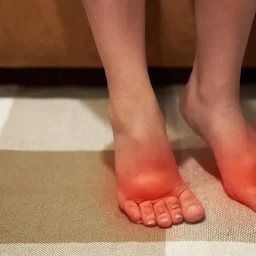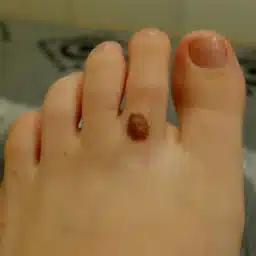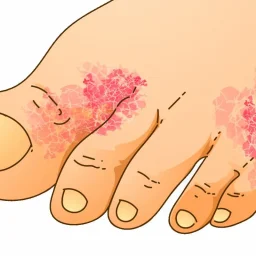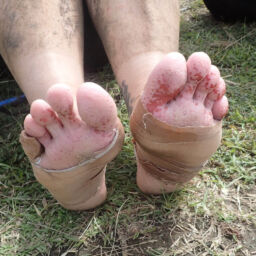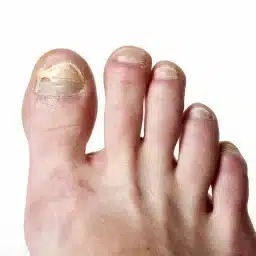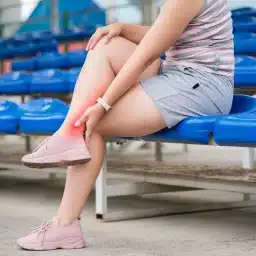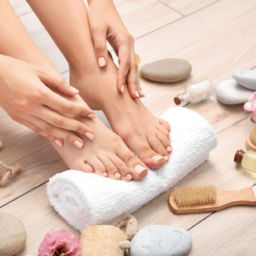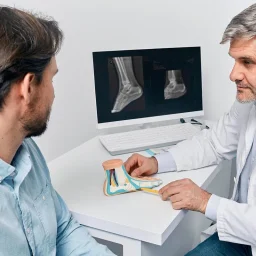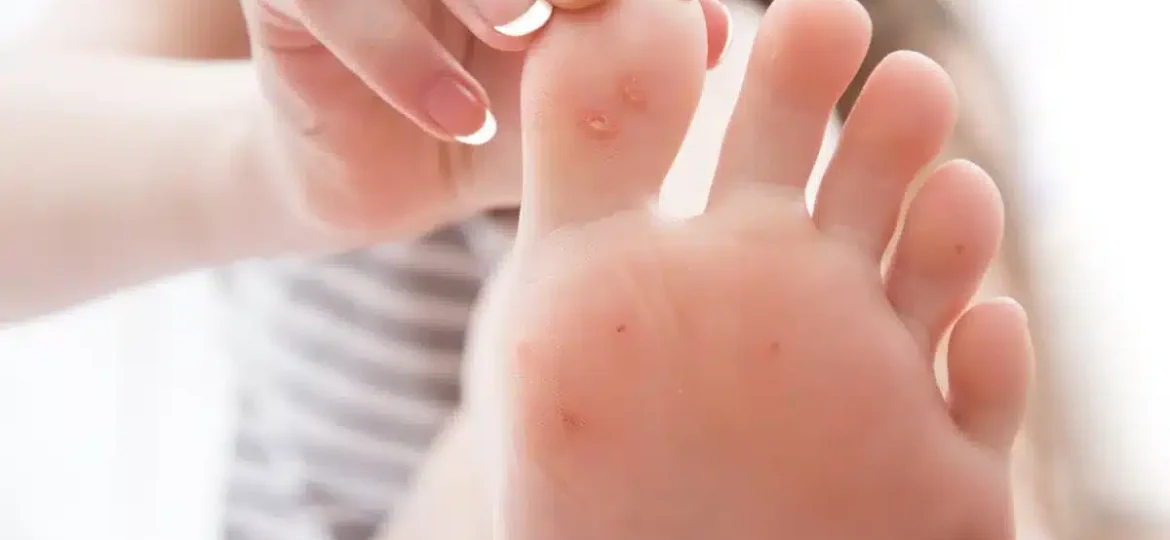
If you’ve noticed a rough, grainy bump on your toe or the sole of your foot, it could be a plantar wart. These pesky growths, caused by the human papillomavirus (HPV), can be painful, uncomfortable, and difficult to get rid of. The good news? You have options! Let’s break down what’s causing that plantar wart on toe and how you can treat it effectively.
What Causes a Plantar Wart on Toe?
Plantar warts develop when HPV enters the skin through small cuts or breaks, often in warm, moist environments. If you frequently walk barefoot in public places like swimming pools or locker rooms, you might be at a higher risk. People with a weakened immune system are also more susceptible to developing plantar warts.
How to Tell If You Have a Plantar Wart
Wondering if that bump on your toe is a plantar wart? Here are some telltale signs:
- A bumpy, thickened, or uneven lesion resembling a small callus or cluster on the toe or sole of the foot.
- Tiny black dots in the wart’s center (these are tiny blood vessels, not dirt).
- Pain or tenderness, especially when standing or walking.
- Hard, thickened skin forming over the wart due to pressure.
- Clusters of smaller warts, known as mosaic warts.
DIY Home Remedies: What Works and What Doesn’t?
If your plantar wart isn’t causing too much trouble, you might want to try some home remedies first. Here are a few popular methods:
- Duct Tape Method: Covering the wart with duct tape for several days may weaken the wart, making it easier to remove.
- Salicylic Acid: This ingredient, found in over-the-counter wart removers, helps dissolve the infected skin layer by layer.
- Apple Cider Vinegar: Some people swear by soaking a cotton ball in apple cider vinegar and applying it to the wart to encourage peeling.
- Emery Board or Pumice Stone: Gently filing the wart before applying treatments can enhance effectiveness.
Keep in mind that home remedies take time, and results vary. If you’re not seeing progress or the wart becomes painful, it’s time to explore medical treatments.
When to Call in the Professionals
If your plantar wart won’t go away, keeps spreading, or becomes painful, it’s best to see a podiatrist. Medical treatments can provide faster, more reliable results. Here are a few options:
- Cryotherapy (Liquid Nitrogen): A podiatrist will freeze the wart, causing it to fall off over time.
- Laser Treatment: This method uses targeted laser energy to destroy wart tissue.
- Prescription Topicals: Stronger versions of salicylic acid or other wart removers may be prescribed.
- Surgical Removal: In rare cases, a doctor may surgically remove the wart if other treatments fail.
How to Prevent Plantar Warts in the Future
The best way to deal with plantar warts? Avoid getting them in the first place! Here’s how:
- Don’t walk barefoot in public areas like swimming pools, gyms, and locker rooms.
- Keep your feet dry—change socks regularly and avoid sweaty shoes.
- Boost your immune system by maintaining a healthy diet and lifestyle.
- Consider the HPV vaccine, which can protect against some wart-causing strains of the virus.
- Avoid touching warts, including your own, to prevent spreading.
Take Control of Your Foot Health – Book Your Appointment Today
A plantar wart on toe can be frustrating, but you don’t have to live with it! Whether you’ve tried home remedies like duct tape and salicylic acid or are ready for professional treatments like liquid nitrogen or laser therapy, Certified Foot and Ankle Specialists is here to help. With over 14 locations conveniently located across South Florida, our expert podiatrists in boca raton provide top-tier care to get you back on your feet.
Schedule a consultation today and take the first step toward walking pain-free again!
